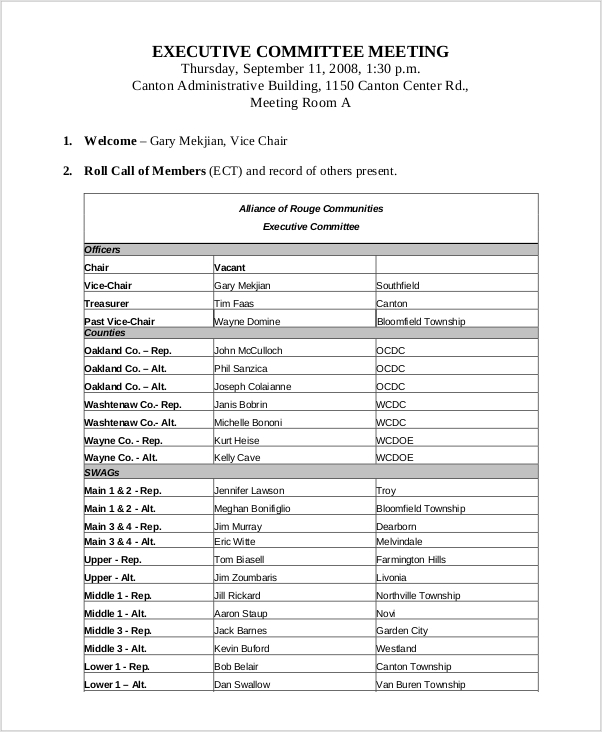Executive meetings are an essential part of any organization’s decision-making process. These meetings bring together key leaders and decision-makers to discuss important topics and make strategic decisions. To ensure that executive meetings are productive and efficient, it is crucial to have a well-structured agenda in place.
In this guide, we will explore the importance of an executive meeting agenda and provide practical tips on how to create one that maximizes productivity and engagement.
Why is an Executive Meeting Agenda Important?
An executive meeting agenda serves as a roadmap for the meeting, outlining the topics to be discussed and the goals to be achieved. It helps keep the meeting focused, ensures that all necessary topics are covered, and provides a clear structure for the discussion. Without an agenda, meetings can easily veer off track, wasting valuable time and leaving participants feeling unproductive. By having a well-planned agenda, executives can make the most of their time together and drive meaningful outcomes.
Key Elements of an Effective Executive Meeting Agenda
Creating an effective executive meeting agenda involves careful planning and consideration. Here are the key elements to include:
1. Meeting Details
Start the agenda by clearly stating the meeting details, including the date, time, location, and duration. This information helps participants plan their schedules accordingly and ensures everyone is on the same page.
2. Objectives and Goals
Outline the objectives and goals of the meeting. What do you hope to achieve by the end of the session? Be specific and concise to keep participants focused on the desired outcomes.
3. Discussion Topics
List the main discussion topics for the meeting. Each topic should have a clear title and a brief description to provide context. Prioritize the topics based on their importance and relevance to the overall objectives.
- Example: Sales Performance Review
- Description: Review and analyze the sales performance for the previous quarter, identify areas of improvement, and develop strategies for increasing sales in the upcoming quarter.
4. Time Allocation
Allocate specific time slots for each discussion topic. This helps keep the meeting on track and ensures that all topics are given adequate attention. Be realistic with your time estimates and allow for flexibility in case discussions run longer than expected.
5. Pre-Meeting Preparation
Include any pre-meeting preparation required from participants, such as reading reports or gathering data. Communicate the expectations to ensure everyone comes prepared and ready to contribute to the discussion.
6. Action Items and Follow-Up
Designate a section for capturing action items and follow-up tasks. This ensures that decisions made during the meeting are documented and assigned to the appropriate individuals. Include deadlines and responsibilities to promote accountability.
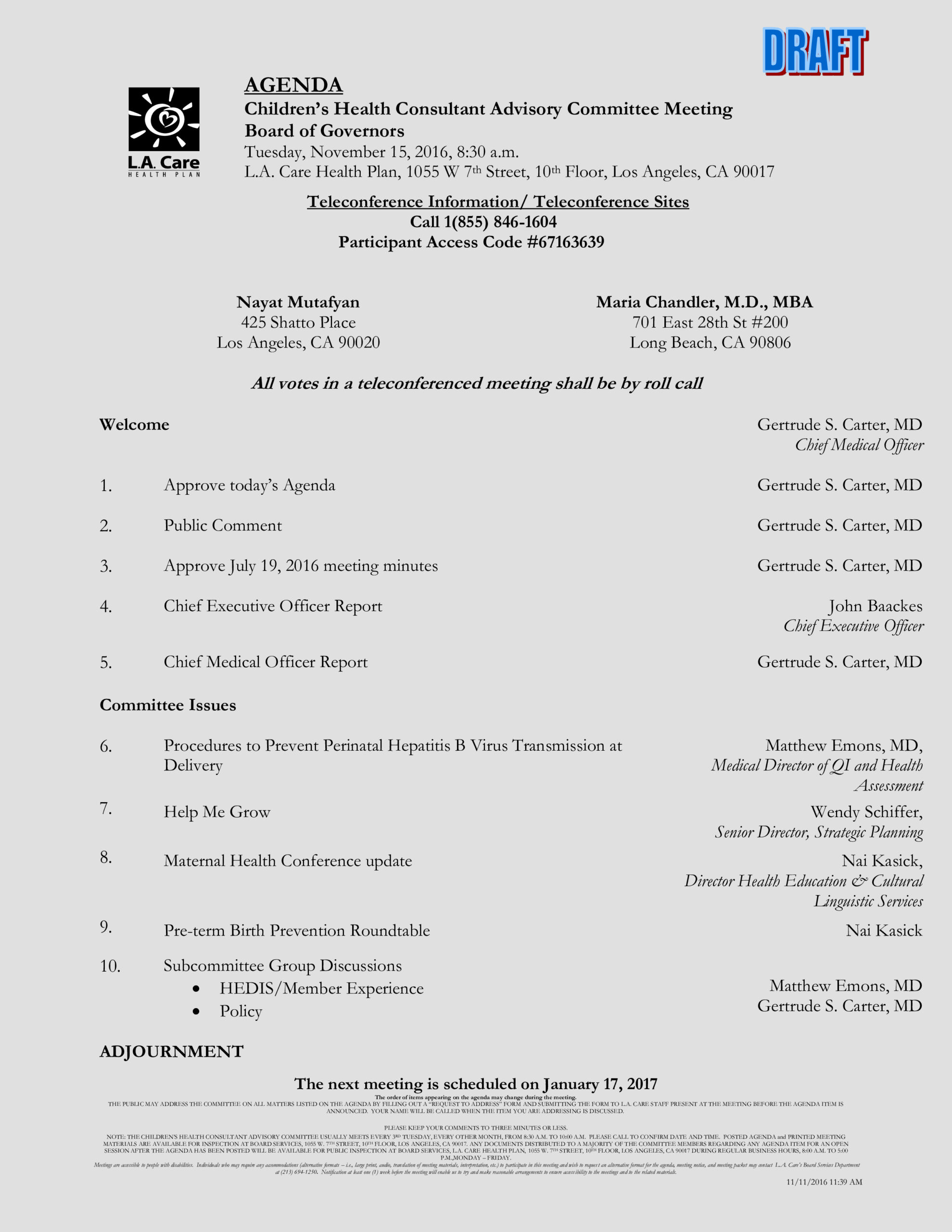
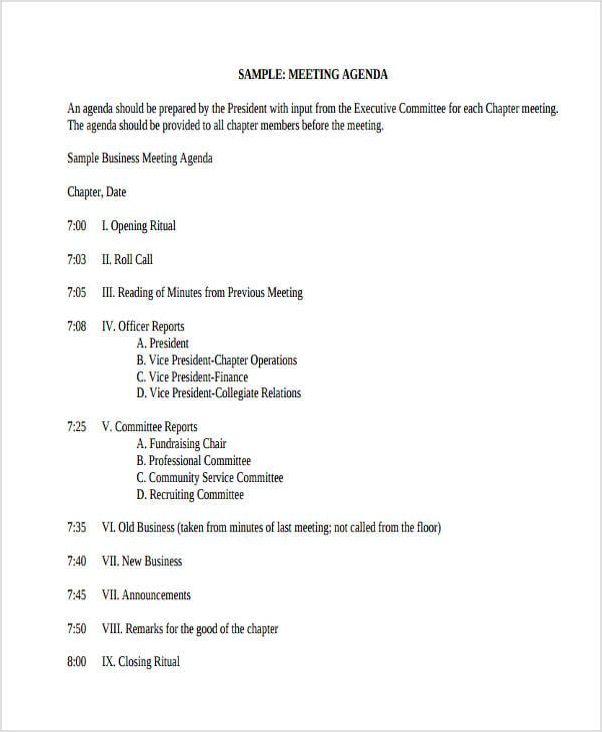
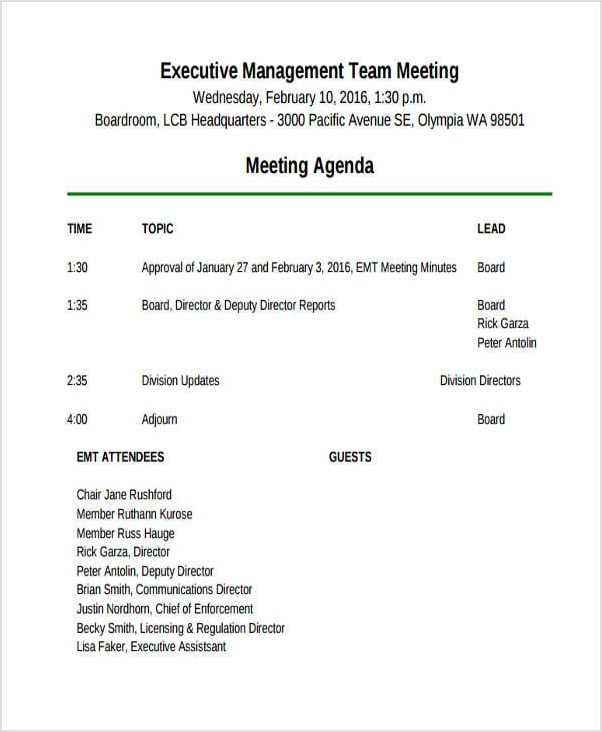
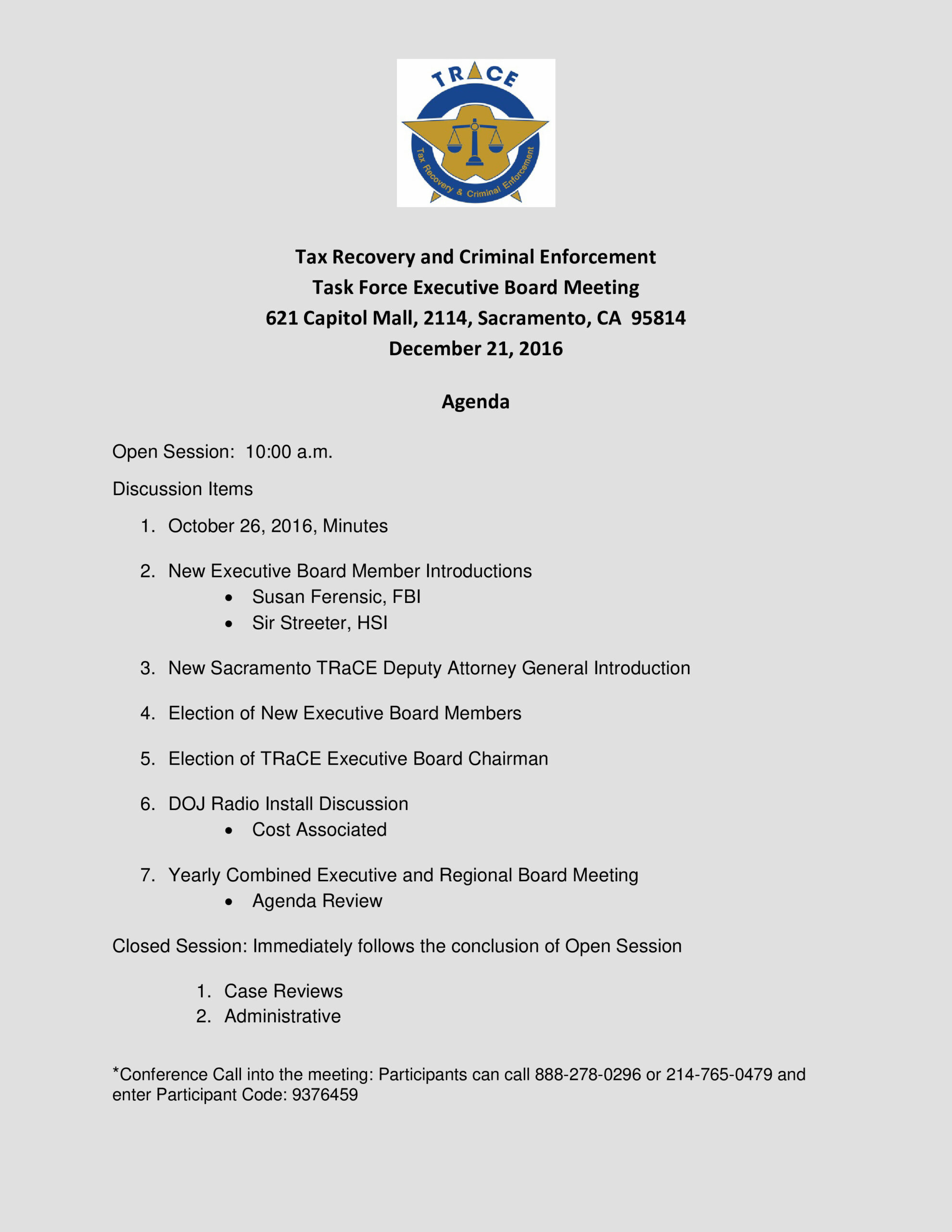
Tips for Creating an Effective Executive Meeting Agenda
Creating an effective executive meeting agenda requires careful thought and consideration. Here are some tips to help you create an agenda that maximizes productivity and engagement:
- Keep it concise: Stick to the most important topics and avoid overloading the agenda with unnecessary items.
- Provide context: Include a brief description or background information for each discussion topic to ensure everyone is on the same page.
- Prioritize: Rank the topics based on their importance and allocate more time to critical discussions.
- Include breaks: If the meeting is expected to be lengthy, include short breaks to allow participants to recharge.
- Encourage participation: Incorporate interactive elements, such as brainstorming sessions or group discussions, to encourage active participation from all attendees.
- Review and revise: After each meeting, evaluate the effectiveness of the agenda and make adjustments as needed for future meetings.
Conclusion
An effective executive meeting agenda is a vital tool for driving productive and efficient discussions. By including key elements such as meeting details, objectives, discussion topics, and action items, you can create an agenda that keeps participants focused and ensures that important decisions are made. Remember to keep the agenda concise, provide context, and encourage active participation to make the most of your executive meetings.
Executive Meeting Agenda Template Excel – Download
